The works of El Greco between visions and innovations

Have you ever wondered why El Greco’s works are so unique?
If you have ever ventured into the artistic world of El Greco, you could not help but be enraptured by his peculiar touch. Immersed in a gallery teeming with various works of art, it becomes almost impossible to ignore his masterpieces, which catch the eye for their modernity and brilliant colours.
El Greco’s works are extremely modern and therefore fascinate anyone who looks at them. They were created at the height of the Counter-Reformation but possess the power of visionary works and are full of innovations that still inspire contemporary artists today.
Here are the works you need to know.
The works of El Greco between visions and innovations
I have always considered El Greco to be a brilliant artist and a revolutionary innovator of his period. He was probably an artist who was not understood for a long time and, in fact, had to move from Crete to Venice, from Rome to Madrid, until he arrived in Toledo where his art found a way to express itself fully.
A true fulcrum of the Spanish Renaissance, the artist conceived a unique aesthetic language in an era that allowed little room for creative transgression.
Here are the works of El Greco you absolutely must know.
TRIPTYCH OF MODENA (1567-1569)
It is a small portable altar intended for private devotion. It consists of three elements that are joined together and can be closed, painted on both sides.
Objects like this were very much in vogue in the 16th century and Cretan and Venetian workshops (Crete was Venetian territory at the time) produced them in large quantities.
Things to know about El Greco include that he trained as an icon painter in Crete but moved to Venice in 1567 in search of fortune and greater glory. This small altar belongs to the period immediately after El Greco’s arrival in Venice and demonstrates not only his great talent (he was about 26 years old) but also his knowledge of Venetian painting.
BOY LIGHTING A CANDLE – EL SOPLÓN (1571-1572)
This painting was located at the Palazzo Farnese in Rome in 1644 and 1653 and is one of the most fascinating paintings of El Greco’s Roman period.
It is a pure exercise in style, perhaps the work was part of the group of works he presented to patrons to demonstrate his skill.
Certainly, it has always been considered a reconstruction of the legendary painting of Antiphilus IV of Alexandria and described by Pliny the Elder in the ‘Naturalis Historia’ as an example of skilful luministic research that ancient works already possessed.
In fact, Jacopo Bassano, a Venetian painter that El Greco knew, had also created a similar work.
El Greco continued to paint this subject in Spain, adding other characters to the canvas.
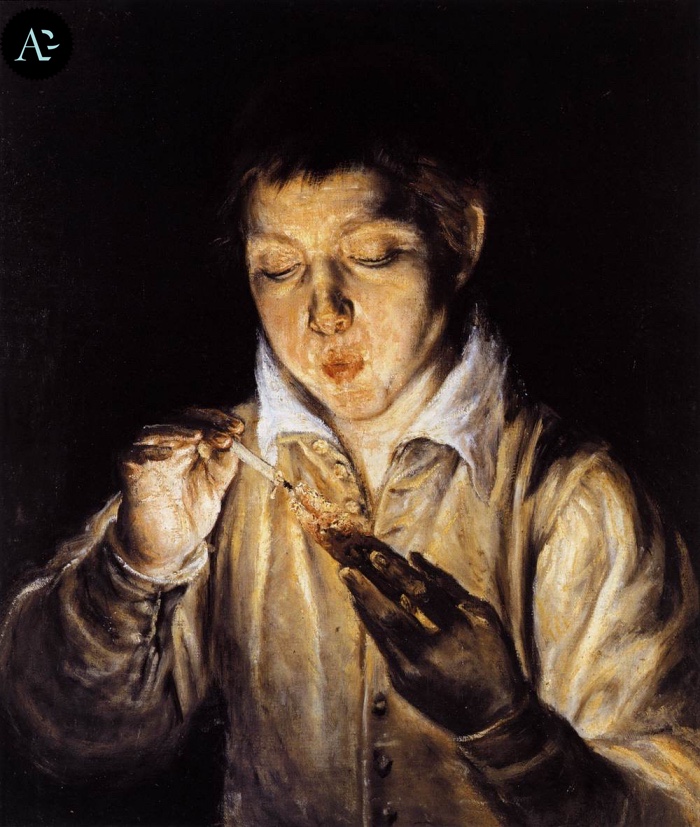
El Greco, Ragazzo che accende una candela
SAN MARTINO DIVIDE IL MANTELLO CON UN MENDICANTE (1597-1599)
The work was commissioned for the Cathedral of San José in Toledo.
The canvas is now in the National Gallery of Art in Washington and depicts Saint Martin of Tours, a Roman soldier, in the act of cutting his green cloak with his sword and giving it to the poor.
The saint wears a finely decorated cuirass and fine shoes, as was the custom among Roman army officers. The figure is slender and stretched out in the rectangular canvas, as is that of the naked beggar.
At least four replicas of the painting are known, most of which are believed to be autographs or by artists belonging to El Greco’s workshop.
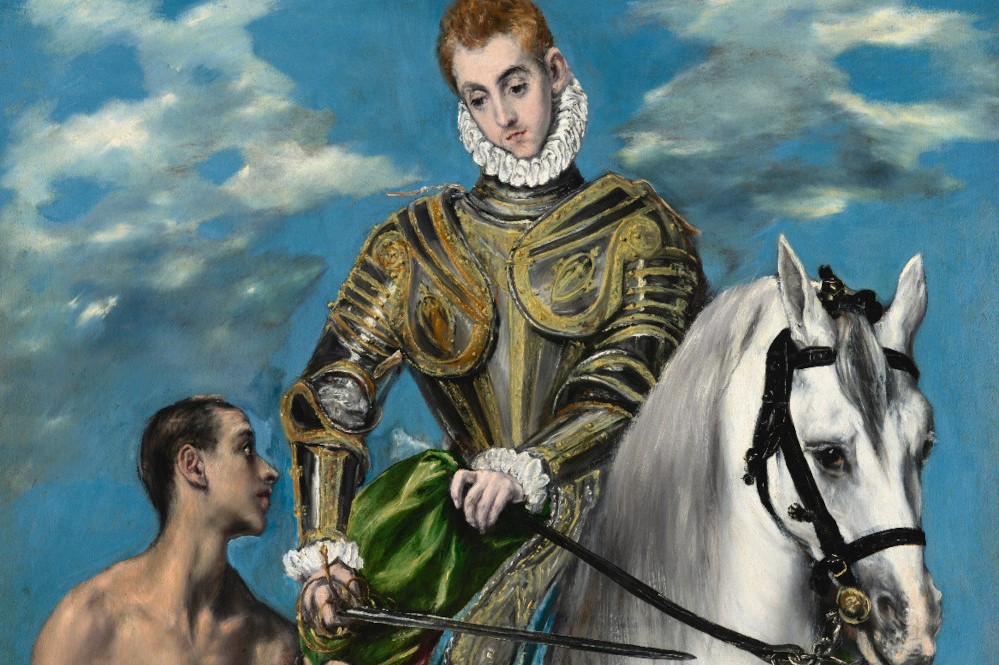
El Greco, San Martino (dettaglio)
L’ANNUNCIO (1597-1600)
The more time passes, the more El Greco’s works begin to develop a unique and unmistakable style, far removed from Venetian models.
The use of colour and painting technique is Venetian-inspired, but it is the subjects and perspective that undergo a decisive transformation.
In this canvas everything sparkles and an otherworldly atmosphere envelops the scene, preventing us from distinguishing the choirs of angels at the top from the Annunciation at the bottom.
The Annunciation, now part of the Prado National Museum’s collection of works, is an apotheosis of light, with brilliant colours and a space that turns from real to celestial and vice versa.
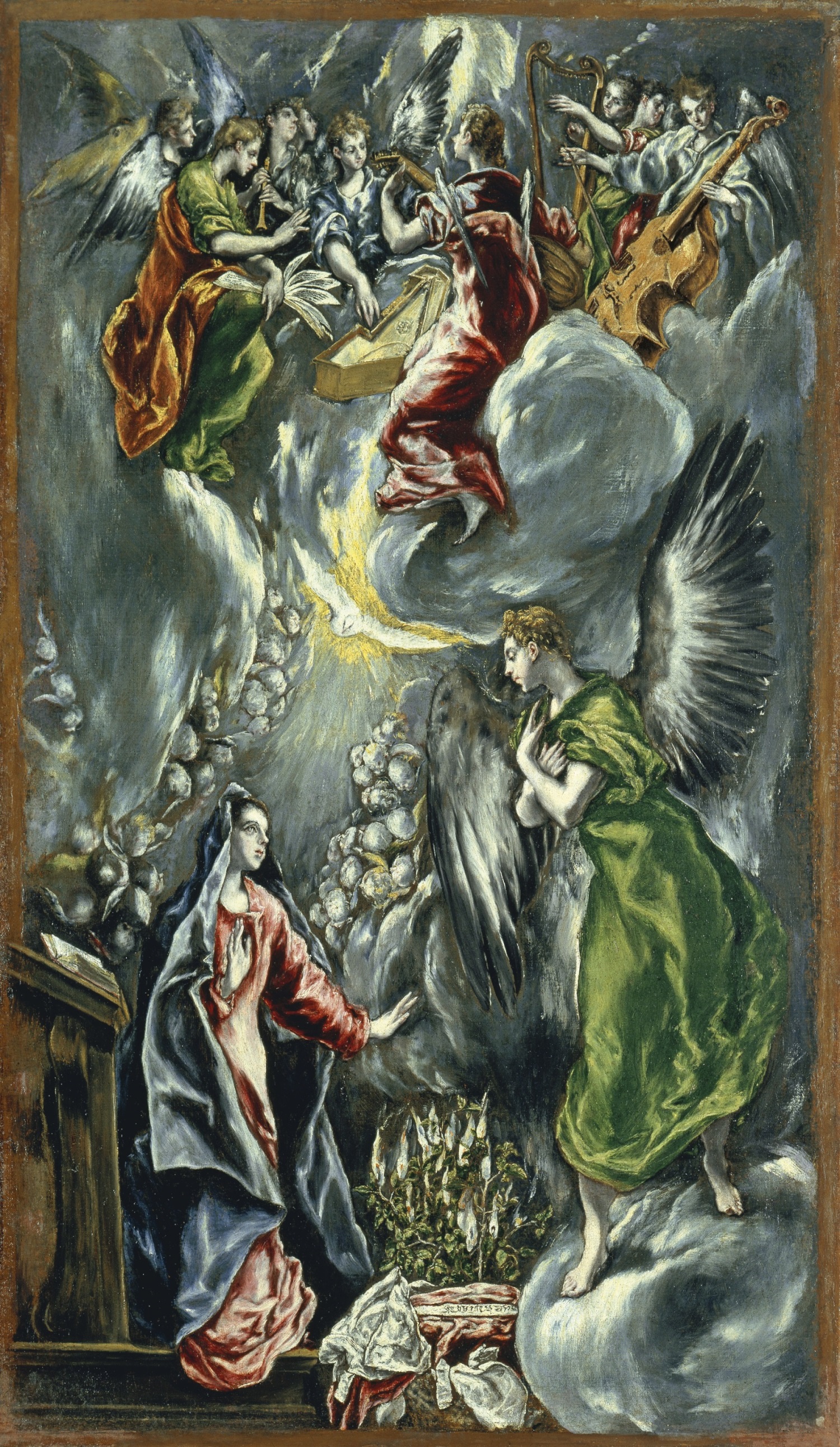
El Greco, Annunciazione
LAOCOON (1610-1614)
This extremely modern painting is a free interpretation of the Laocoon sculpture group preserved in the Vatican Museums and which El Greco almost certainly saw during his stay in Rome.
The sculpture is here broken down by El Greco and the characters, in the way they are described, are reminiscent of Michelangelo’s sculptures. The figures are slender and partly reproduce the features of the original, which are immersed in a completely different landscape from that of ancient Troy. In fact, the city of Toledo can be seen in the background.
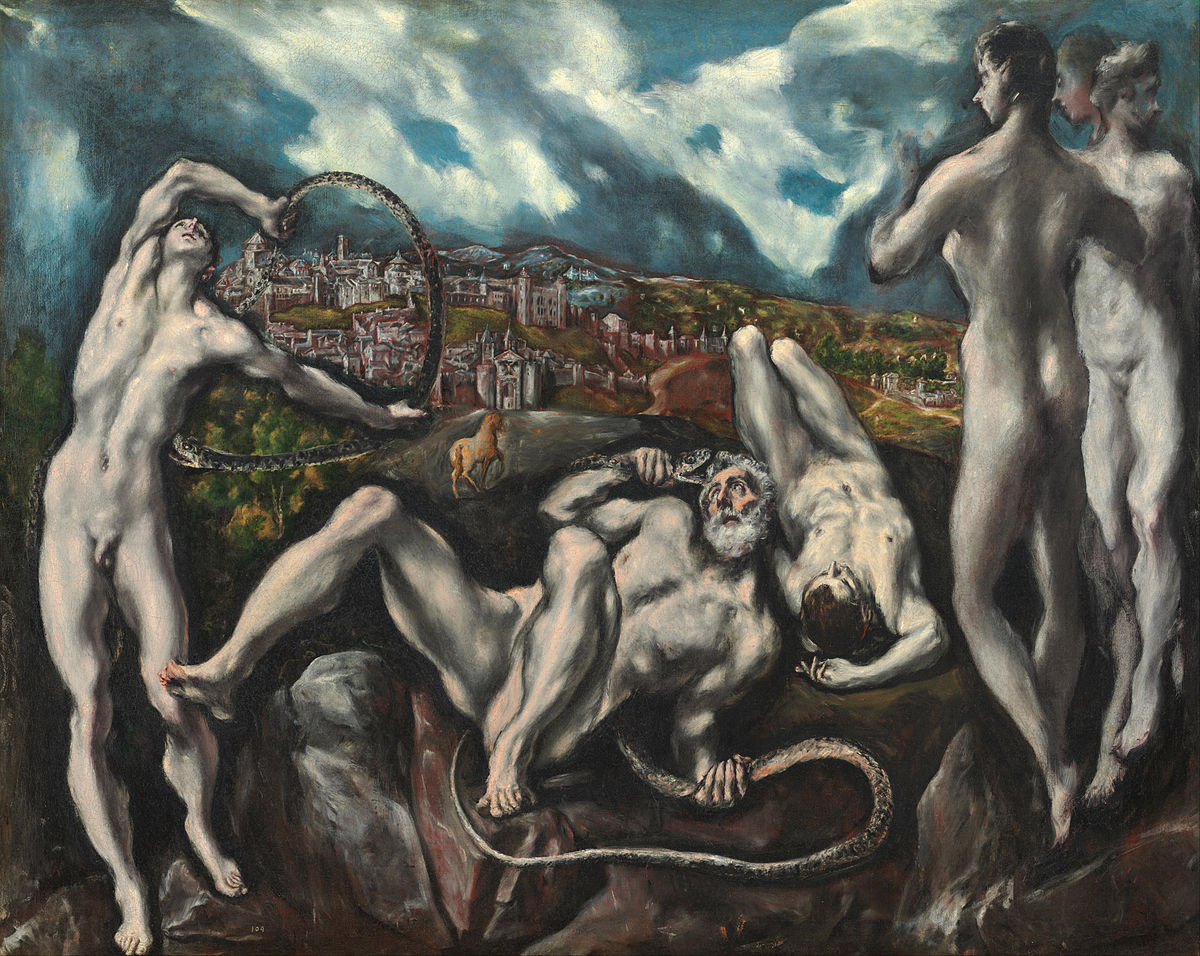
El Greco, Laocoonte
THE ADORATION OF THE SHEPHERDS (1612-1614)
The theme of the Annunciation was treated by El Greco throughout his life, in fact this canvas was intended for his funeral chapel.
The work remained in the church of Santo Domingo el Antiguo in Toledo, where the artist was buried, until 1954. The year in which it was purchased by the Prado Museum, where it is now displayed with its original frame.
The Adoration of the Shepherds is one of the last works by El Greco, who worked on it until the last days of his life. He chose a vertical format for this one and it is one of his greatest masterpieces.
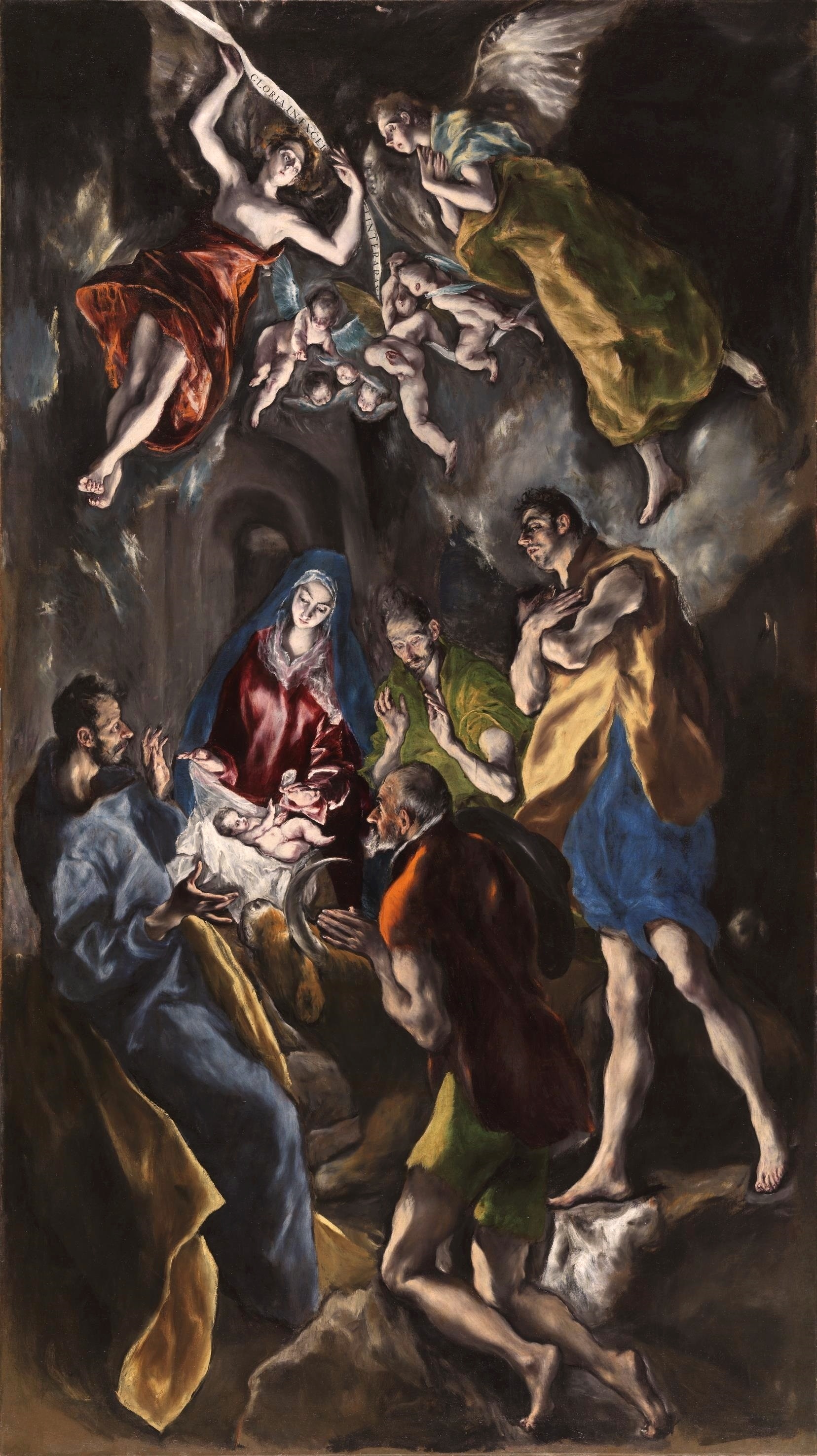
El Greco, L’Adorazione dei pastori
In art as in life, El Greco was a beacon of authenticity and innovation.
He painted visionary works that were ahead of their time and did not just satisfy his patrons but wanted to leave an indelible mark on the history of art.
His legacy lives not only in his works, but also in the endless stream of inspiration he left behind him.
Follow me on:
About me
In this blog, I don't explain the history of art — I tell the stories that art itself tells.


